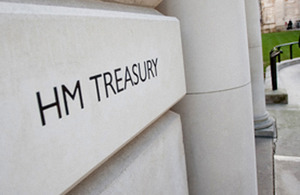Government is on track to cut cost of delivering infrastructure
The Government has today published the first annual report of the three year Infrastructure Cost Review programme.

The government has today published the first annual report of the three year Infrastructure Cost Review programme launched in March 2011 and led by Infrastructure UK.
The Cost Review set out plans to reduce the cost of delivering infrastructure in the UK by £2 to £3 billion a year by 2015. Today’s report confirms that the programme is on track to deliver these savings, with the first annual report having already identified projected savings of up to £1.5 billion through changed behaviours and practice, consistent with the Cost Review principles.
The Commercial Secretary to the Treasury, Lord Sassoon said:
It is vitally important that utility bill payers and taxpayers get good value for every pound spent on new infrastructure.
Every pound saved through this Cost Review programme is a pound more that can be spent on new infrastructure for the UK.
This first annual report shows we are on track to deliver the savings we identified last year.
What is particularly encouraging is that these savings are being delivered through close and fruitful co-operation between the public and private sectors.
Examples of savings include: a projected 20 per cent saving (over £600 million) on the 20 major projects being delivered through the Highways Agency’s Managed Motorways and Trunk Road Improvement programme, through managing projects more strategically, allowing them to work better with their supply chain and deliver savings. London Underground also expect to deliver over £400 million efficiency savings through more effective project management.
These examples, along with the others detailed in the report, represent evidence of good progress towards the overall objective of £2 to 3 billion savings per annum by 2015. The government’s focus for the next year of the programme will be to embed the behavioural changes and improved processes required to sustain these savings, with particular focus on the top 40 priority infrastructure projects and programmes identified in the National Infrastructure Plan 2011.
Industry has already reacted positively to improvements in the visibility of the infrastructure and construction pipelines, published alongside the Autumn Statement 2011. Working with industry the government is building on these pipelines to inform the development of “capability plans” to identify and address skills gaps and capability issues within key sectors. An example of this is the tunnelling sector where key projects like Crossrail, Thames Tideway, High Speed 2 and National Grid cable tunnels will benefit from a more coordinated approach to investment in skills and apprenticeships through the Tunnelling and Underground Construction Academy.
Notes for Editors
-
To improve clients’ commercial capability and understanding of supply chain costs the government has for the first time put in place an agreement between the Highways Agency, Environment Agency, London Underground and Network Rail to pool data and access commercial intelligence.
-
Other key achievements highlighted in the annual progress report include:
- government and industry agreement to the Infrastructure Charter as a basis for setting out the behaviours required to improve collaboration and reduce costs
- development of a ‘routemap’ to enable public and private clients to select the most appropriate procurement strategy and drive consistent behaviours and practice for across infrastructure programmes or projects
- application of new approaches to the management of risk and contingency in public sector infrastructure projects
- formation of an Industry Standards Group to remove duplication and redundancy in technical standards for infrastructure assets
- commitment to address the problems of cyclicality in the water sector as part of a joint study with Ofwat
- partnerships with industry to improve supply chain skills and capability and access cross sector efficiencies - starting with pilot programmes for tunnelling across rail, waste water and energy projects
-
On 21 December 2010, the government published the Infrastructure Cost Review: Main Report. It identified that efficiency improvements could lower the costs of delivery and realise potential benefits of £2-3 billion per annum.
-
On 31 March 2011, the government published a detailed three year Implementation Plan for achieving these savings by 2015, which included a commitment to publish annual progress updates. The first of these updates was published today:
-
The full 2011 Implementation Plan can be found here:
-
The Infrastructure Cost review aims to address client organisation and supply chain issues that are barriers to innovation and sustainability of the supply chain and significant drivers for higher cost.